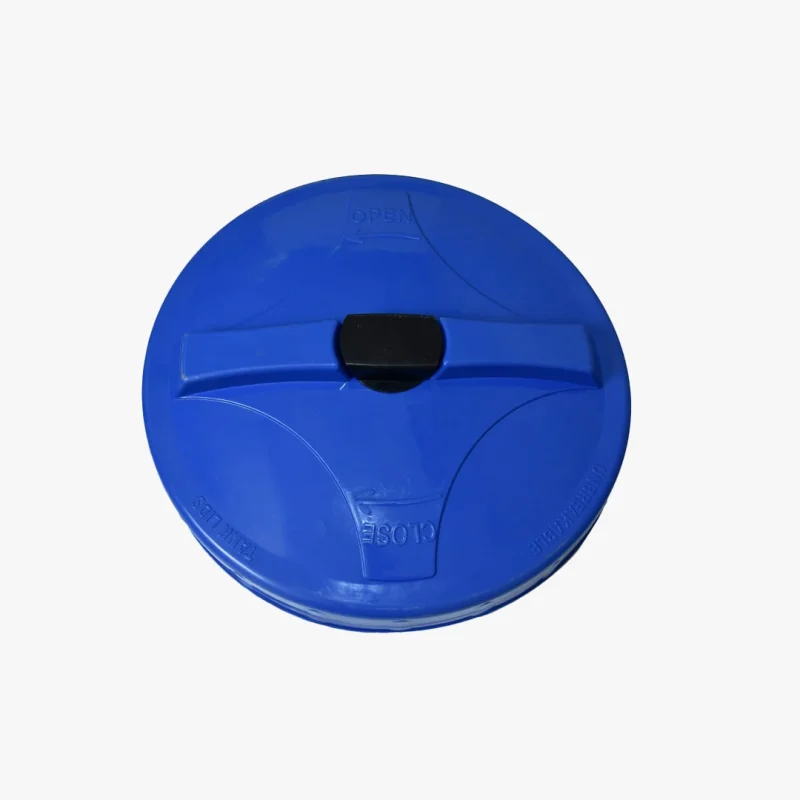It’s critical to store clean water. But have you ever thought about what keeps that water safe? A plastic water tank lid, also known as a water tank cover. It is important for protecting your water from insects, debris, and evaporation. It’s possible that your water supply will get contaminated. You can waste valuable water or they can serve as a mosquito breeding ground if you don’t have a decent cover.
Every lid is different. The size, location, and usage of your tank will all influence your choice.
Selecting the proper lid matters whether you have a huge storage system or a tiny domestic tank. Let’s examine how to identify the ideal match for your requirements.
Types of Plastic Water Tank Lids

The right water tank cover depends on what you need. Here are the most common types:
1.Standard Flat Lids
- Basic, flat design that sits on top of the tank.
- Affordable and easy to find.
- Works fine for covered storage but doesn’t stop water from pooling on top after rain.
2.Domed Lids
- Curved shape. So rainwater slides off instead of collecting.
- Helps prevent debris buildup.
- More durable than flat lids. They don’t sag over time.
3.Screw-Top Lids
- Twists on tightly, making it hard for kids or animals to open.
- Best for tanks that need a secure seal, like those holding drinking water.
- Takes a little more effort to remove for cleaning.
4.Vented Lids
- Small holes allow air to flow in and out while keeping bugs and dirt out.
- Good for tanks that need airflow to prevent pressure buildup.
- Not ideal if you’re trying to keep out dust completely.
5.Custom-Fit Lids
- Made to match specific tank brands and models.
- Ensures a perfect fit so nothing unwanted gets inside.
- Usually costs more but lasts longer.
Key Factors to Consider When Choosing a Lid
Picking the right plastic water tank lid isn’t easy. Here is what really matters when making your choice:
1.Material Matters
- Look for food-grade HDPE plastic. It is safe for drinking water.
- UV-resistant lids last longer in direct sunlight without cracking.
- Cheap, thin plastic becomes brittle. They break easily.
2.Size & Fit
- Measure your tank opening before buying—too big or too small won’t work.
- A loose lid lets in dirt and bugs.
- Some lids come with rubber seals for a tighter fit.
3.Weather Resistance
- If your tank is located outside, the lid should handle rain, wind, and sun.
- Domed lids help rainwater roll off.
- Freezing temperatures? Make sure the plastic won’t crack in the cold.
4.Security Features
- Children and animals are kept out by screw-top or lockable lids.
- Strong locks keep the lid from blowing off in the wind.
- If you store chemicals or important water, security matters.
5.Ventilation (Or Not)
- Need airflow? A vented water tank cover prevents pressure buildup.
- No vents? Better for keeping out dust and insects.
- Some lids let you adjust airflow as needed.
6.Easy to Use
- Lightweight lids are easier to remove for cleaning.
- Handles or grip edges make lifting simpler.
- If you check the tank often, pick a lid that’s quick to open.
7.Maintenance Needs
- Smooth surfaces are easier to wipe clean.
- Lids with fewer crevices won’t trap dirt or algae.
- Check if replacement parts are available.
Why a Good Plastic Water Tank Lid Makes All the Difference
You might not think much about your water tank cover, but it’s working harder than you realize. A proper plastic water tank lid isn’t just a cap—it’s your first line of defense keeping your water clean and safe. Here’s what a quality lid actually does for you:
1.Blocks Contaminants
- Keeps out leaves, dust, and bird droppings
- Prevents insects from laying eggs in your water
- Stops small animals from falling in
2.Fights Algae Growth
- Sunlight + water = green slime
- A solid lid cuts off light to stop algae before it starts
- Less cleaning needed between uses
3.Saves Water
- Open tanks lose water to evaporation, especially in heat
- A tight-fitting lid can reduce water loss by up to 90%
- More water stays where it belongs—in your tank
4.Improves Water Taste
- No debris means no rotting leaves affecting flavor
- Less exposure to air prevents that “stale” taste
- Important if you use the water for drinking
5.Prevents Accidents
- Children can’t accidentally drop toys or tools inside
- No risk of anyone (or any pet) falling in
- Gives peace of mind when kids play nearby
6.Extends Tank Life
- Less debris means fewer scratches inside your tank
- Proper ventilation prevents pressure damage
- UV-resistant lids won’t crack and need replacing
7.Saves Money Long-Term
- Cleaner water means fewer filter changes
- Less evaporation = lower refill costs
- One good lid lasts years instead of replacing cheap ones
Don’t Make These Water Tank Lid Mistakes
Buying a plastic water tank lid seems simple enough—until you realize you got the wrong one. We have seen people make the same avoidable mistakes over and over. Learn from their experiences.
1.Guessing the Size
- “It looks about right” leads to lids that don’t seal
- Even a 1cm gap lets in mosquitoes and dust
- Always measure your tank opening with a tape measure
2.Ignoring the Climate
- Sun-heavy areas need UV-resistant material
- Freezing climates require frost-proof plastic
- Windy spots need secured lids with clamps
3.Choosing the Cheapest Option
- Thin, brittle plastic cracks within months
- Flimsy lids warp in heat, breaking the seal
4.Forgetting About Access
- Screw-top lids frustrate if you check water often
- Heavy lids become annoying for daily use
- Make sure you can actually use your tank conveniently
5.Overlooking Ventilation Needs
- Sealed lids cause vacuum suction during drainage
- Improper airflow leads to condensation and mold
- Know whether your tank system needs vents
6.Neglecting Maintenance
- Not cleaning the lid’s underside grows slime
- Ignoring small cracks that become big breaks
- Forgetting to check if seals are still tight
7.Assuming One Lid Fits All
- Drinking water tanks need food-grade materials
- Agricultural tanks might prioritize different features
- Industrial tanks need heavy-duty security
The Right Lid Makes All the Difference
That moment you open your tank and find crystal-clear water, free of leaves and bugs? That’s not luck. That’s a water tank cover doing its job.
Think of it this way:
- A proper plastic water tank lid saves you time (no more fishing out debris)
- It saves money (less water wasted to evaporation)
- Most importantly, it keeps your water safe for whatever you need it for
You don’t need the fanciest lid—just the right one for your tank and your situation. Measure carefully, think about your climate, and don’t assume all lids are the same. A little effort now prevents headaches later.
When water tank cover works properly, you won’t have to think about it. Still using an old, cracked lid? Maybe it’s time for an upgrade. Your future self (and your water) will thank you.
FAQs
1.How to choose the best water tank?
Picking the right water tank depends on three main things:
Material:
- Plastic: Lightweight, affordable, and rust-proof
- Steel: Durable
- Concrete: Great for underground storage. But hard to clean
Size:
- Check your daily water needs for drinking, cooking, and cleaning
- Bigger isn’t always better. Consider space and weight limits
Location:
- Outdoor tanks need UV protection
- Indoor tanks should fit in tight spaces
- Elevated tanks need strong support
2.What’s the proper way to use plastic for water storage?
Plastic tanks are popular, but they need proper care:
Safe Setup:
- Keep away from direct sunlight to prevent algae
- Place on a flat, stable surface (not bare ground)
- Use a stand if possible for better flow
Maintenance Musts:
- Clean every 6 months with mild bleach solution
- Always use a tight-fitting plastic water tank lid
- Check for cracks or leaks seasonally
Water Safety Rules:
- Never store chemicals in the same tank
- Rotate stored water every few months
- Use a first-in, first-out system for drinking water



